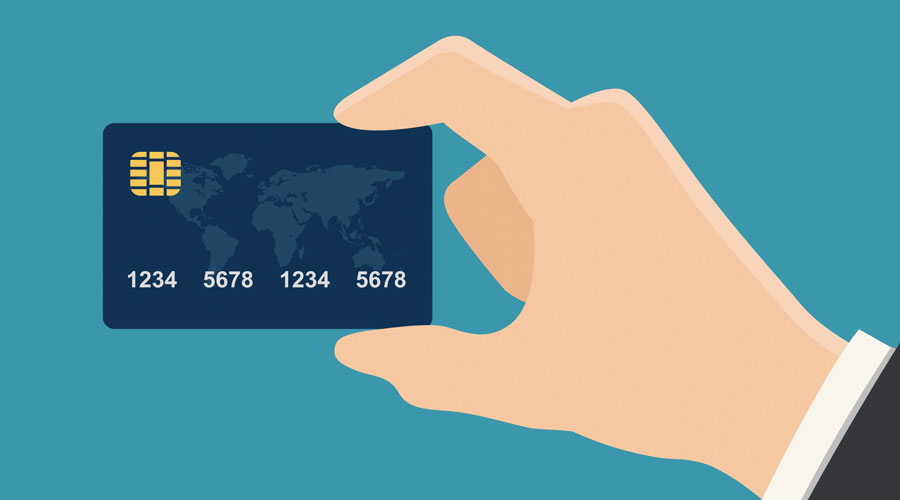Credit cards are changing. And so are the ways you can accept credit card payments in your pharmacy.
By October 2015, millions of Americans will no longer be using magnetic stripe credit cards. Instead, they will have EMV cards. These are also known as “chip” or “smart” cards. The Payments Security Task Force estimates that 63 percent of all credit and debit cards in the U.S. will contain EMV chips by the end of 2015, and that 98 percent will be EMV-enabled by the end of 2017.
EMV, which stands for Europay®, MasterCard® and Visa®, is the global standard for the interoperation and acceptance of secure payment transactions. Originally written in 1993 and 1994, the standard is now managed, maintained and enhanced by EMVCo, a consortium consisting of American Express®, Discover®, JCB, MasterCard®, UnionPay and Visa®.
Magnetic stripe technology—the same technology used in cassette tapes—is outdated, and has left credit card users in the U.S. vulnerable to fraud. According to a report from Barclays, half of all credit card fraud worldwide happens in the U.S., even though only 25 percent of all credit card transactions take place in the U.S. These fraudulent transactions cost the U.S. upwards of $8.6 billion a year.
Other countries, including most European countries, began transitioning to chip cards in the 1990s. Now, the U.S. is catching up.
In October 2014, President Obama announced the Buy Secure Initiative, a movement designed to speed adoption of EMV technology in the U.S., and credit card companies are working to comply as quickly as possible.
As they continue to replace customers’ magnetic stripe cards with chip cards, they’re encouraging merchants—including independent community pharmacies—to update their card reader technology, too.
Credit card companies have set a soft deadline of Oct. 1, 2015 for businesses to upgrade to EMV technology. For those that don’t, liability for fraudulent transactions that occur as a result of the use of an EMV card on a stripe card reader will shift from banks and credit card companies to the businesses themselves.
While there’s no law or regulation that will require you to have EMV technology in your pharmacy, processing EMV transactions sooner, rather than later, can only benefit your business.
Here’s what you need to know about EMV before the October deadline.
More secure transactions
With magnetic stripe cards, information about the bank, card and account is stored on the stripe. Because the information stored on the stripe is never changed, hackers can easily extract all the account information, and copy the stripe onto a fraudulent card.
With EMV cards, however, a unique, one-time code is created for each transaction. The code can’t be reused, so it’s useless if copied or stolen. And, the data is encrypted both in the chip and at the EMV reader, where the customer pays.
While fraudulent charges are still possible with EMV cards, the technology makes it much more difficult for hackers to steal usable data.
Culture shift
Credit card payments are transitioning from “swipe-and-sign” to “chip-and-signature,” and eventually to “chip-and-PIN.” This means that the speed and ease your customers—and you—have come to expect from credit card payments are a thing of the past. Instead of swiping their cards and putting them away, customers with chip cards will leave their cards in the terminal for the entirety of the transaction, which can take up to 10 seconds.
Educate yourself, your employees and your customers on how chip-and-signature transactions work. It will take time for everyone to get used to the new system, and you’ll have to be diligent about making sure transactions are processed correctly.
EMV and your pharmacy
Because EMV cards are still being manufactured with magnetic stripes, you’re still able to process chip cards on a magnetic stripe terminal. You’ll just be liable for any fraud resulting from these transactions.
To avoid this liability, you’ll want to update to a system that is EMV-enabled and use the EMV reader to process chip card transactions. Putting this technology in place by the October deadline has been a top priority for point-of-sale vendors, so check with your pharmacy’s vendor for more information about how you can update your system.
Chip-and-Dip: Chip Card Processing
Card swiping will soon be a thing of the past. Card dipping is the standard for chip cards. Here’s how it works.
1. Insert the card into the EMV slot, face-up and chip-first. The EMV slot is usually at the bottom of the terminal.
2. Keep the card in the slot until the transaction is complete. Currently, the average transaction length for EMV cards is 10 seconds, so remind your customers to be patient.
3. If it’s a chip-and-PIN card, the customer will be prompted to input his or her PIN. However, most chip cards in the U.S. are chip-and-signature, not chip-and-PIN.
4. The transaction will occur as the chip and the reader create a onetime encrypted code.
5. Depending on your terminal, the customer may be required to sign for the transaction, unless he or she has a chip-and-PIN card.
6. The receipt will print.
7. The card can now be removed from the EMV slot.
Pharmacy Liability
When is your pharmacy liable for fraudulent charges? It depends on the type of transaction. Here’s a guide.
You will be liable for:
- Chip cards processed at a magnetic stripe terminal
You will not be liable for:
- Chip cards processed at a chip terminal
- Magnetic stripe cards processed at a chip terminal
- Magnetic stripe cards processed at a magnetic stripe terminal
- Keyed-in and online transactions
Source: EMV 101: What Small Businesses Need to Know About the Switch to Chip Card Technology, A webinar by Square ® and the U.S. Small Business Administration
Chip Cards vs. Magnetic Stripe Cards
Will you know a chip card when you see one? Here are three things you should know about the appearance of chip cards versus the appearance of magnetic stripe cards.
1. Chip cards are identifiable by the chip on the front of the card, but they are the same size and thickness as magnetic stripe cards.
2. Both credit card types have magnetic stripes. Credit card issuers, wary of changing too much too quickly and disrupting payments, are still equipping chip cards with magnetic stripes to ease the transition, and so that consumers can use their chip cards at locations that haven’t yet updated their systems.
3. Both cards require the back of the card to be signed for security reasons.













